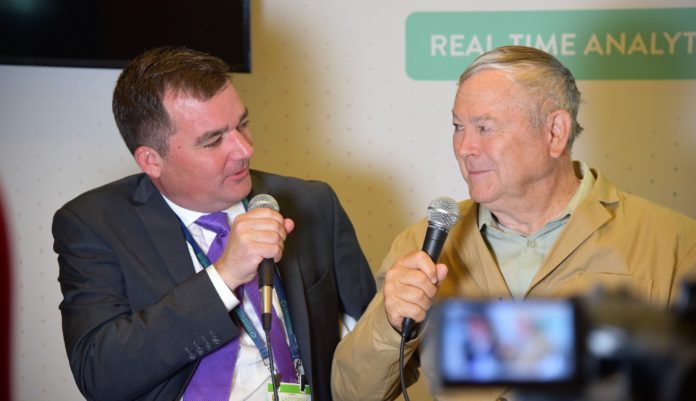ANAHEIM, California – Co-hosted by the National Cannabis Industry Association (NCIA) and the California Cannabis Industry Association (CCIA), the California Cannabis Business Conference (CCBC) was held Monday and Tuesday at the Hilton Anaheim. The Disneyland-adjacent hotel boasts a modern, cavernous lobby and generous amenities, making it an ideal venue for the business-focused trade show, which offered cannabis exhibitors over 60,000 square feet of floor space split between two exhibit halls, with additional sponsor tables spread throughout the mezzanine level.
NCIA was founded to give cannabis businesses a voice in Washington, D.C. As the trade group has evolved, shows like CCBC now further enhance communication and opportunities among those businesses. To that end, foot traffic in the halls was brisk throughout the day at an event curated to help people navigate “the world’s largest adult use market,” a market that remains teetering between the stark hemispheres of legal and illegal activity.
That is one reason the Anaheim event, like many others in the cannabis space, contained a healthy dosage of policy as a subject of both seminars and show floor gossip. This week, policy was front and center out of necessity, as well. California’s latest draft regulations for the industry—which contained several significant changes—were released the Friday before the show began, leaving hardly enough time for industry analysts to pore over the draft’s 300+ pages.

Session topics, which reflected the diverse nature of business needs, were organized into three tracks emphasizing Distribution, Retail & Delivery; Cultivation & Manufacturing; Emerging Topics; Local Licensing; Industry & Political Forecasting; and The Future is Now.
Individual topics touched on subjects as varied as Tax Collection: The Good, The Bad, and the Ugly; Diversity, Inclusion and Equity; Local Authorization: How to Work with Your Municipalities; and Data and Security: What You Need to Know. Speakers included the usual mix of industry veterans, business owners, investment gurus, legal professionals, regulators, and legislators.
In addition to an active show floor and well-attended sessions, CCBC served as a medium of unplanned and real-time communication from the industry to regulators. This occurred when the BCC’s Ajax learned at the event the extent to which the industry was opposed to Section 5032 of the proposed regulations, the provision that effectively puts an end to white label deals between licensed operators and brands with a license.
According to industry members in attendance, Ajax was very surprised by the negative reaction of the industry to the particular regulation, especially in light of the Bureau’s belief that it was merely clarifying existing policy. It remains to be seen if the contentious policy is altered, but the fortuitous timing of this year’s CCBC certainly added an element of real-world policy drama to the business-focused show.
An hour north on the campus of UCLA, the CannMed conference also kicked off Monday. Featuring a small area for exhibits, the centerpiece of the event was two packed days of presentations by researchers from around the globe reporting on cutting-edge cannabis research. Coverage to follow.













